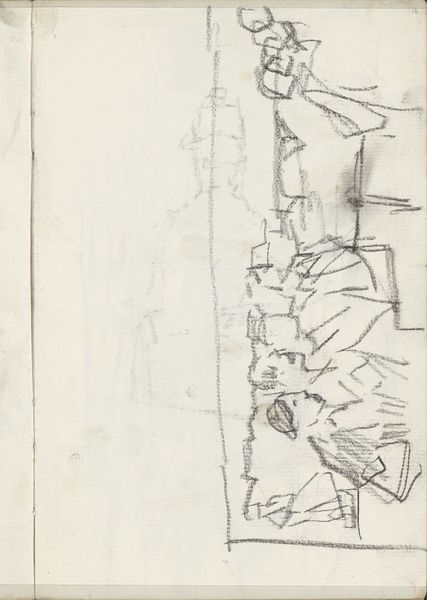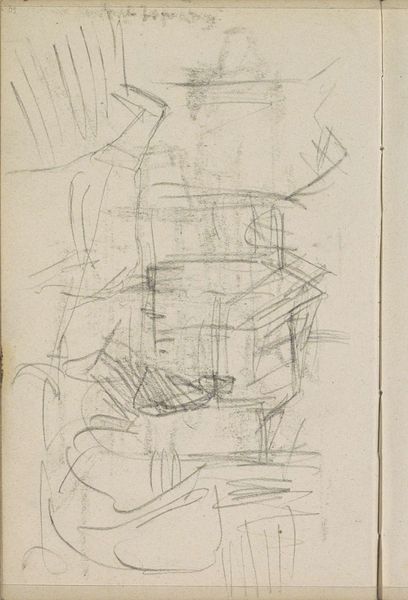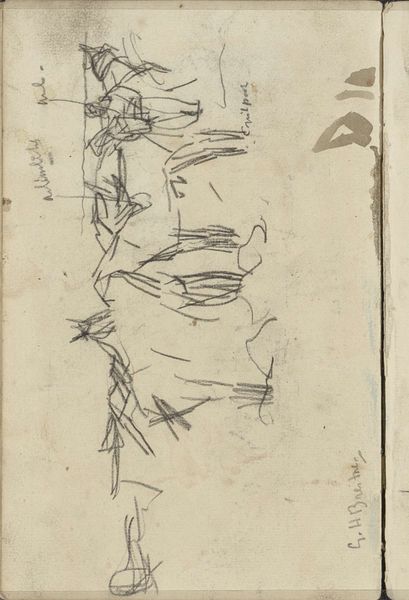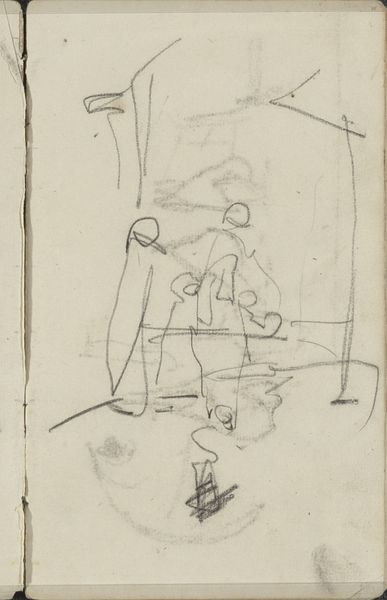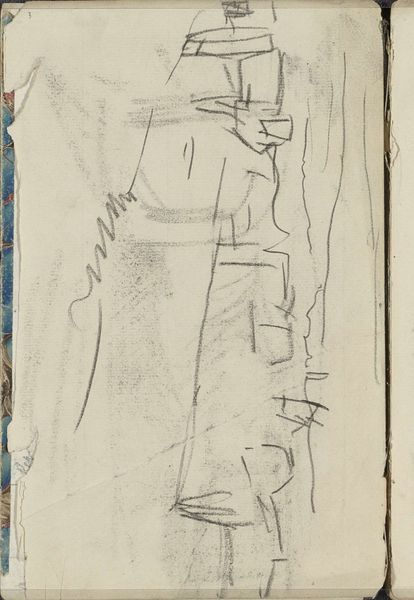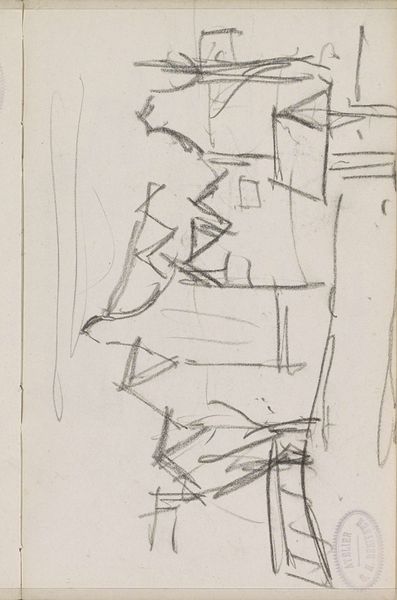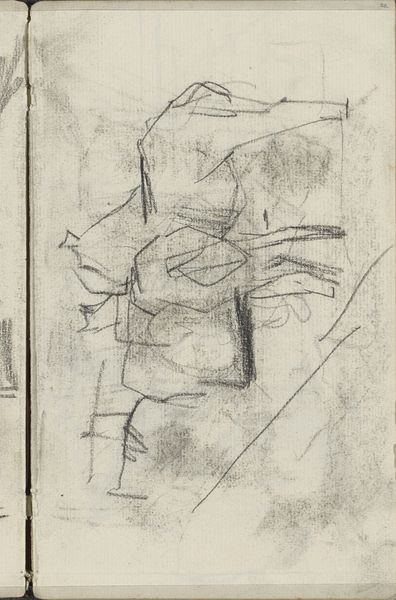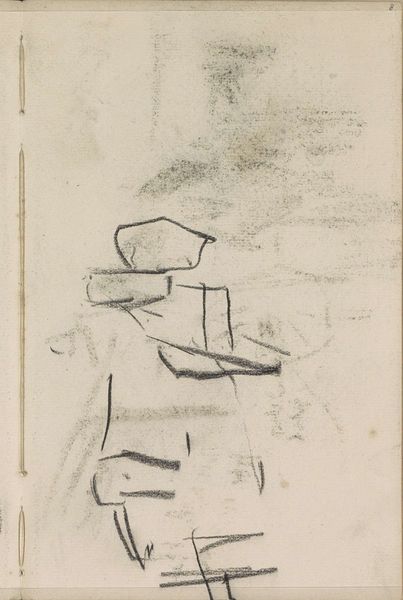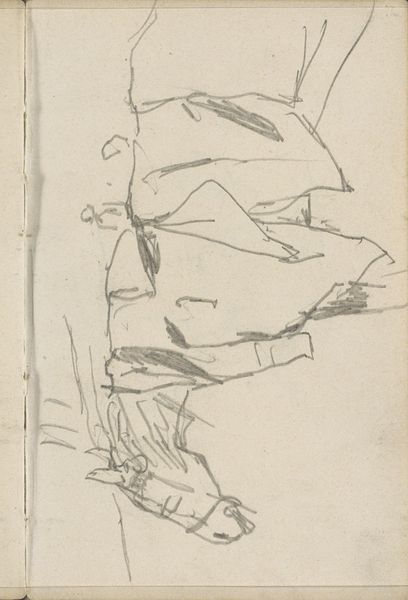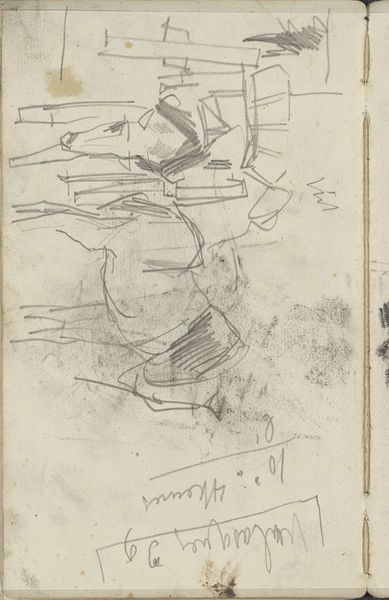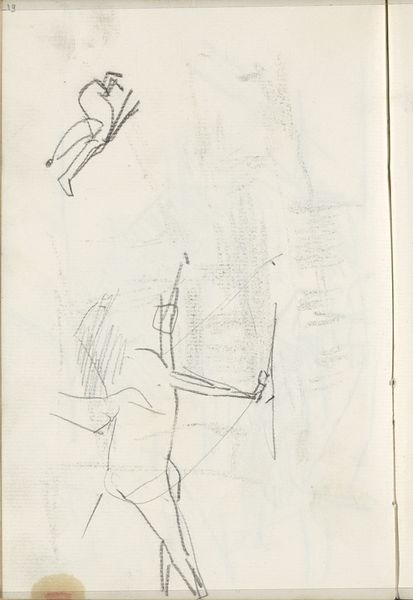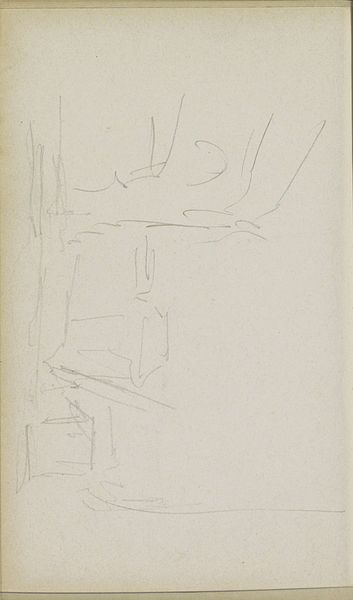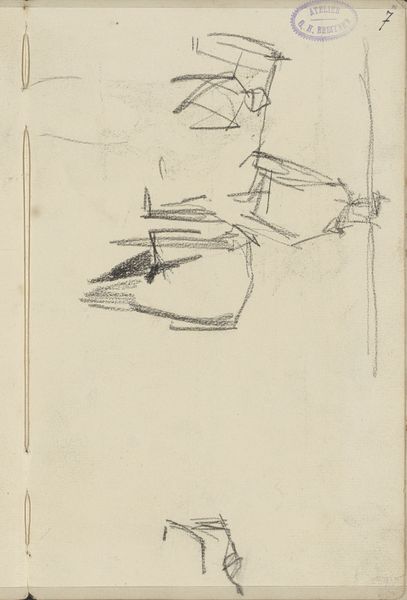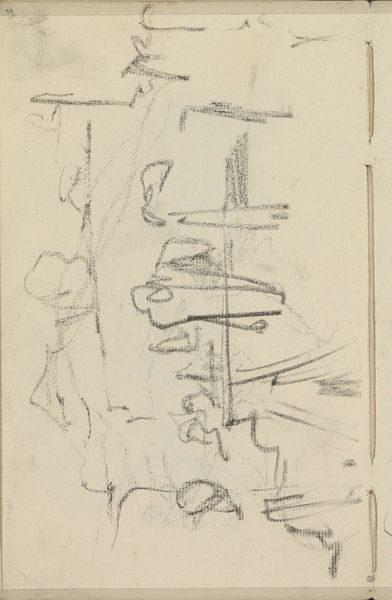
drawing, paper, pencil
#
portrait
#
drawing
#
impressionism
#
paper
#
geometric
#
pencil
Copyright: Rijks Museum: Open Domain
Curator: Here we have George Hendrik Breitner's "Studieblad met dieren en een hoofd," or "Study Sheet with Animals and a Head," likely created between 1881 and 1883. It's a pencil drawing on paper, currently held here at the Rijksmuseum. What’s your immediate impression? Editor: Chaotic. The lines are so frenetic; they feel like a caged energy trying to escape. Curator: That's a keen observation. Breitner, known for capturing the dynamism of Amsterdam, often sketched rapidly in his notebooks. This "study sheet" format suggests a practice of immediate observation. The paper itself becomes a stage for the evolving performance of lines and shading. Editor: It almost feels like he's dissecting movement. The individual forms of what I now perceive to be the animals aren't wholly defined, but their relationships—their positions to one another—are sharply communicated by this sort of geometry. The strategic use of angles gives this rudimentary piece depth and the possibility of spatial positioning. Curator: And how might these seemingly fragmented studies contribute to his broader artistic practice? Editor: This looks like one of those moments of looking anew. I could guess he was exploring different modes of visualizing movement by trying to strip down how living things exist within time. Curator: That speaks to the artistic milieu of the time. Impressionism was breaking ground, after all, and this raw, unfiltered glimpse into the artist's process, this search for new modes of expressions, feels utterly in tune with that revolutionary artistic impulse. And those figures – can we even call them 'figures?'– they were of the street too: of everyday life! They democratize the arts to what one could really encounter as modern. Editor: Absolutely. And I will go further now as my eyes wander...I noticed how it appears to have no dominant focal point. Its balance defies the typical classical approach, rejecting that hierarchy. Instead, there’s a feeling of perpetual motion, a microcosm of the city itself! Curator: Well put! Thinking about the historical role of this work, I find that seeing it as this raw exercise in image-making changes our perspective on this kind of artist in particular. Editor: This unfiltered approach leaves much open to the viewer's imagination. Curator: It gives you freedom... it gives art freedom, actually! Editor: Agreed! And such small freedoms, it could be argued, hold the most meaning.
Comments
No comments
Be the first to comment and join the conversation on the ultimate creative platform.
